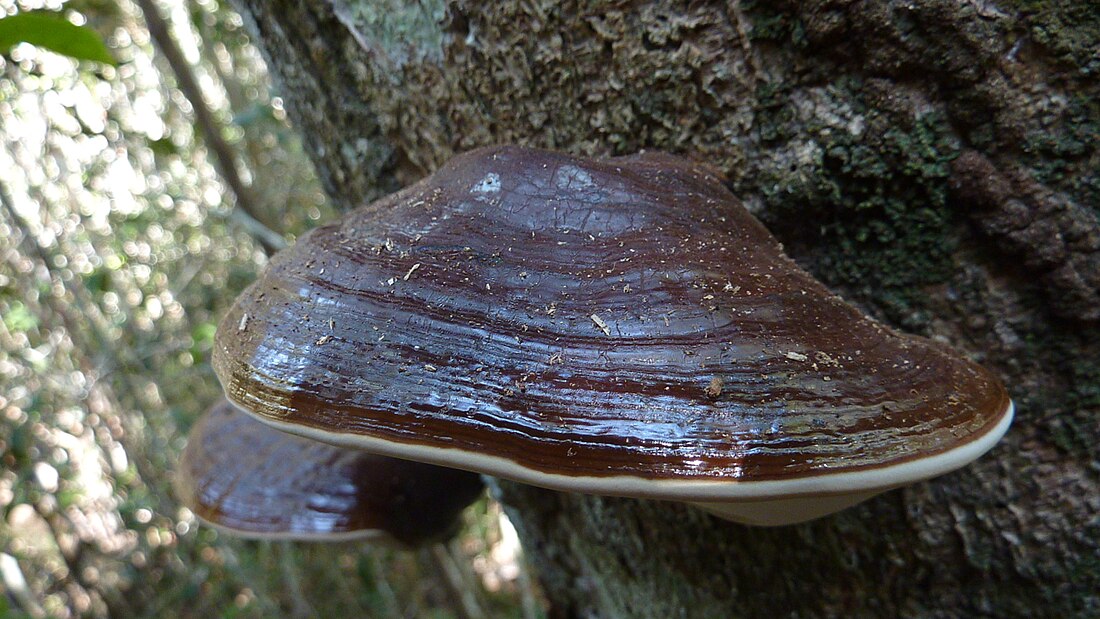Top Qs
Timeline
Chat
Perspective
Ganoderma australe
Species of fungus From Wikipedia, the free encyclopedia
Remove ads
Ganoderma australe is a fungal plant pathogen in the genus Ganoderma. It is a species of basidiomycete fungi in the family Polyporaceae. Members are also known as bracket fungi, or polypores.[2]
Remove ads
Description
Like other polypores, its physical characteristics include a rigid and tough texture and a shelf-like appearance. Most specimens of G. australe have a dark brown upper surface, though the ones found in the northwest of India and Pakistan have a lighter appearance. G. australe also have thin, shiny horn-like layers, distinguishing them from G. applanatum. It does not have a long and thin stipe like G. cochlear.[3]
Physiologically, their mode of transmission is likely primarily through air-borne spores, as no rhizomorphs have been found. [4] While temperature increases decrease their spore size [5] its spore size was found to be 7.5–9.5 x 5–7 micrometers in one sample. In addition to parasitizing oil palms, G. australe has a variety of hosts, in comparison to other Ganoderma species.[6]
Remove ads
Distribution and habitat
It is distributed widely throughout the tropics, appearing to be one of the most common species of Ganoderma there. Some places it occurs is south of the Sahara desert, the shores of the Pacific Ocean in Canada, and the north west of India and Pakistan, and from the Philippines to New Caledonia and Papua.[4] It is not clear if this species occurs in South America, as few specimens are available.
Remove ads
References
External links
Wikiwand - on
Seamless Wikipedia browsing. On steroids.
Remove ads

